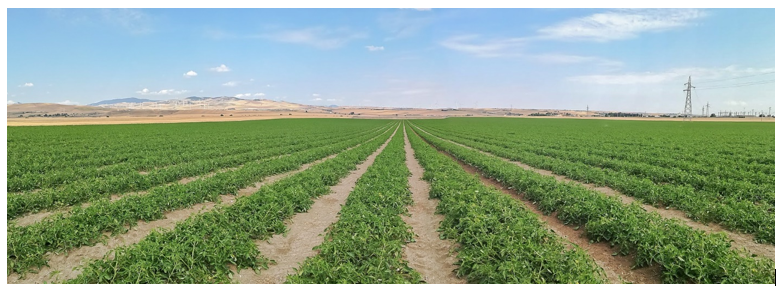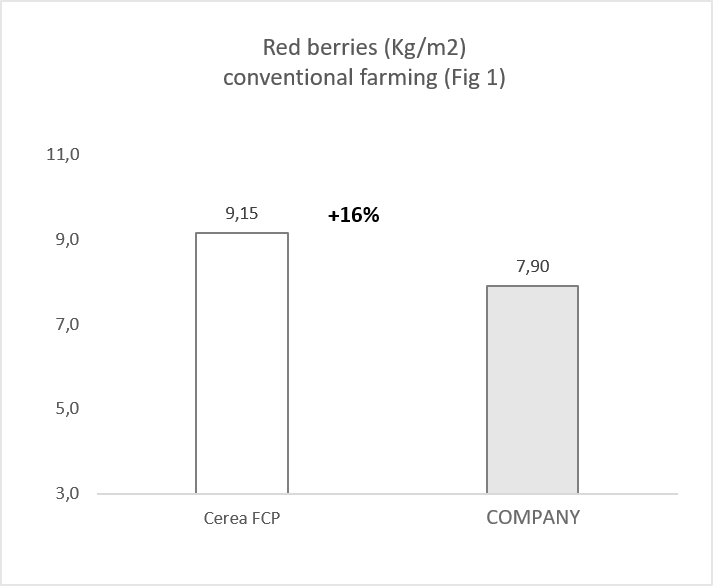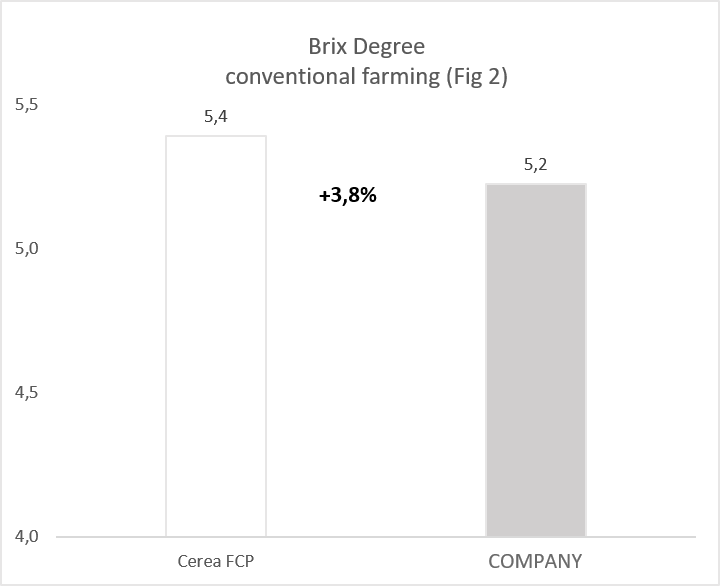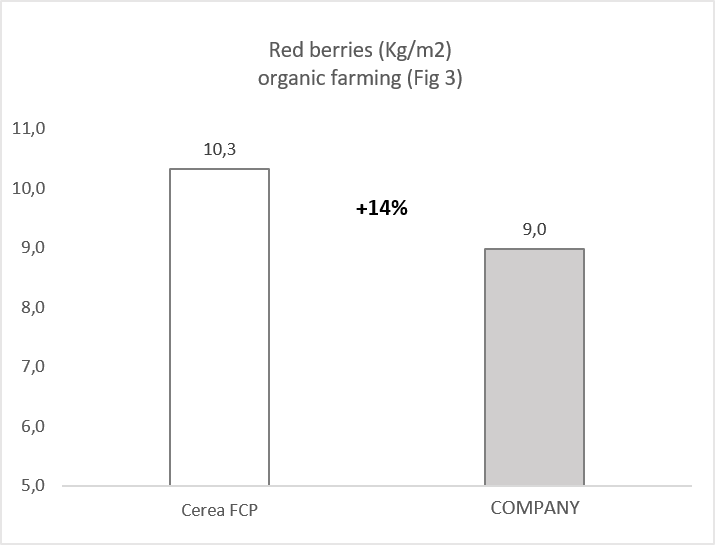Bigger berries, higher Brix degree and a better market positioning: these are the results obtained by Cerea FCP through field tests on the processing tomato.
The importance of processing tomato in the Italian agriculture
Italy is one of the major producers of processing tomato in Europe. In 2019 its cultivation has reached a total area of 77.437 hectares, with an increase of approximately 7% as compared to last year. In the same year, only in Northern Italy the production has reached 24.697.706 quintals in total, that is about 51% of national production. (Data source: ISTAT, Italian National Institute of Statistics)
In the last few years organic farming has significantly grown. In particular, in 2020 the production of processing tomato through organic farming has reached an area equal to 3.451 hectares. Its organic crop is mainly located in the province of Ferrara, covering 2.212 hectares, followed by Ravenna (416 ha), Parma (247 ha), Verona (173 ha) and Piacenza (120 ha). (Data source: greenplanet.net)
These data highlight the increasing importance of the processing tomato crop for the economy of the country. In order to meet the standards demanded by the market, a particular attention from the nutritional and agronomical point of view is required. As a consequence, it becomes fundamental to invest in the research of specific fertilizers, able to satisfy nutritional needs during the whole crop cycle.
In Cerea FCP, we are trying to meet this particular need, providing fertilizers and special products which can ensure productions with the appropriate physical and organoleptic characteristics.
Cerea FCP nutrition proposal
In order to make a comparison between our nutrition proposal and companies’ practices, both in organic and conventional farming, in the course of 2020 we have performed tests on processing tomato. They were structured by dividing plots into two areas: the first one has been treated with the nutrition methodology proposed by Cerea FCP, the second one by employing companies’ cultivation practices. Arbitrary tests have been carried out on 1 m2 in three different sites (a total of 3 m2 for each field trial) within the production area.

Tests have been conducted with the aim of:
- Increasing yields
- Increasing berry’s texture
- Increasing sugar content (higher Brix degree)
Test with conventional farming techniques (Veneto)
In the nutrition proposal of Cerea FCP the following products were applied in fertigation:
- Calcito: corrective with carboxylic acids acting as root system activator.
- Proser MnZn: blend of microelements containing Zinc and Manganese vectored by carboxylic acids.
Shortly before harvesting, we have taken samples and studied the parameters below:
- the number of red and green berries
- total kg of berries
- Brix degree
These are the results obtained in relation with companies’ techniques:

Shortly before harvesting, we have taken samples on which we have observed:
- Red berries yield (kg/m2)
- Brix degree
The charts in figure 1 and 2 report the results obtained in the experimental test of conventional farming.
Test with organic farming techniques (Emilia-Romagna)
In Cerea FCP nutrition proposal the following products were employed:
- Verv Plus: protein hydrolysate of animal origin with amino acids, nitrogen and organic carbon, enriched with microelements.
- Proser MnZn: blend of microelements containing Zinc and Manganese vectored by carboxylic acids.
- Proser Ca: fluid fertilizer containing Calcium and carboxylic acids increasing berries texture and elasticity.

Also in this case, shortly before harvesting, we have taken samples on which we have observed:
- Red berries yield (kg/m2)
- Brix degree
- Berry’s average weight
- Rot influence
The charts in figure 3 and 4 report the results obtained in the experimental test of organic farming.
Conclusions
FCP nutrition proposal, both in organic and conventional farming, led to encouraging results since it produced a major fruit size as well as a greater Brix degree with respect to companies’ nutritional techniques.
In the conventional farming test in Cerea FCP field trial a higher yield per hectare (9,15 against 7,90 kg/m2) and a higher Brix degree (5,4 against 5,2) were obtained. This allowed to get a higher price of 1,1 €/ton equal to 100 € per hectare only as quality reward, to be added to the extra GSP (Gross Saleable Product) gained by the total increase in production.
In the organic farming test, results were similar to the conventional one. In particular, Cerea FCP field trial registered an increase in yield (10,3 against 9,0 kg/m2), in the berry’s average weight (75,2 g against 65,7), in the Brix degree (4,5 against 4,2) and a significantly lower influence of rotten berries (2,1 berries/m2 against 7,5).





